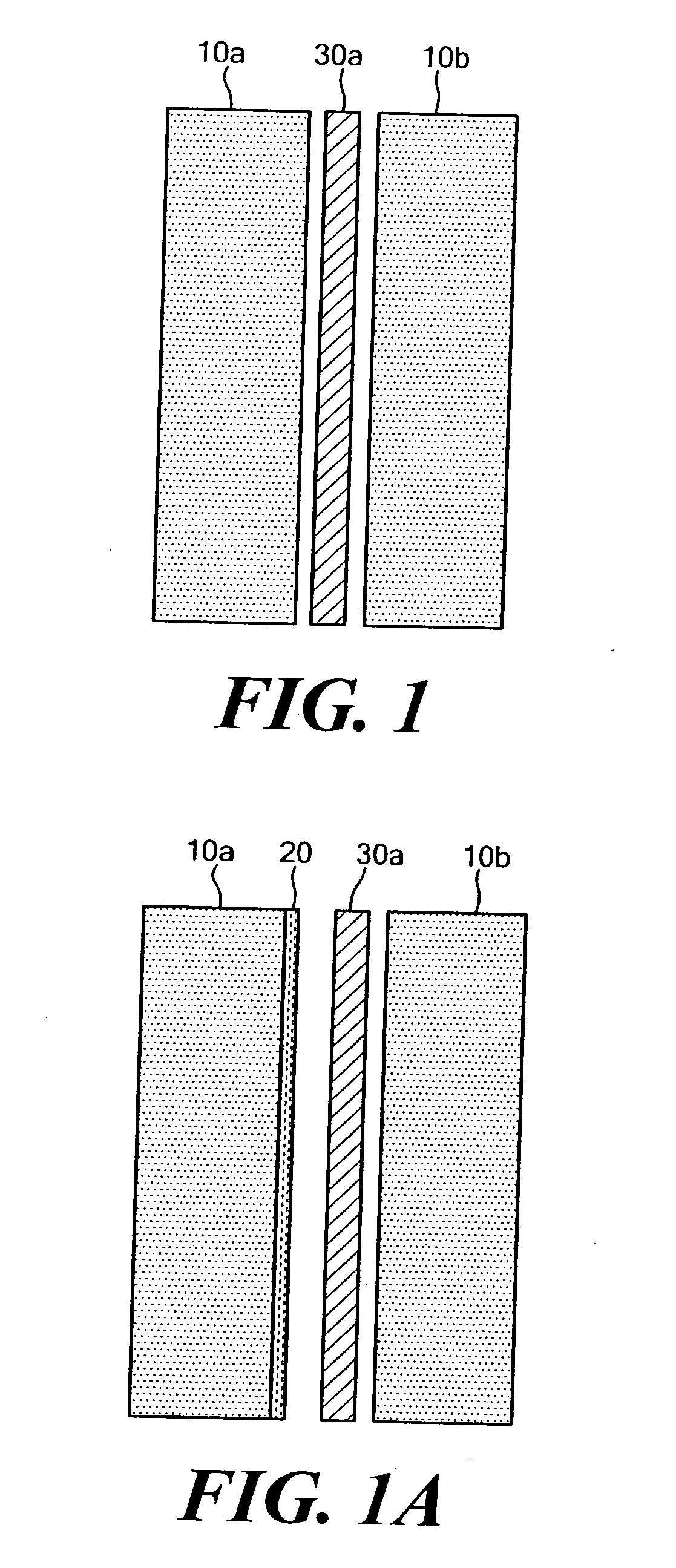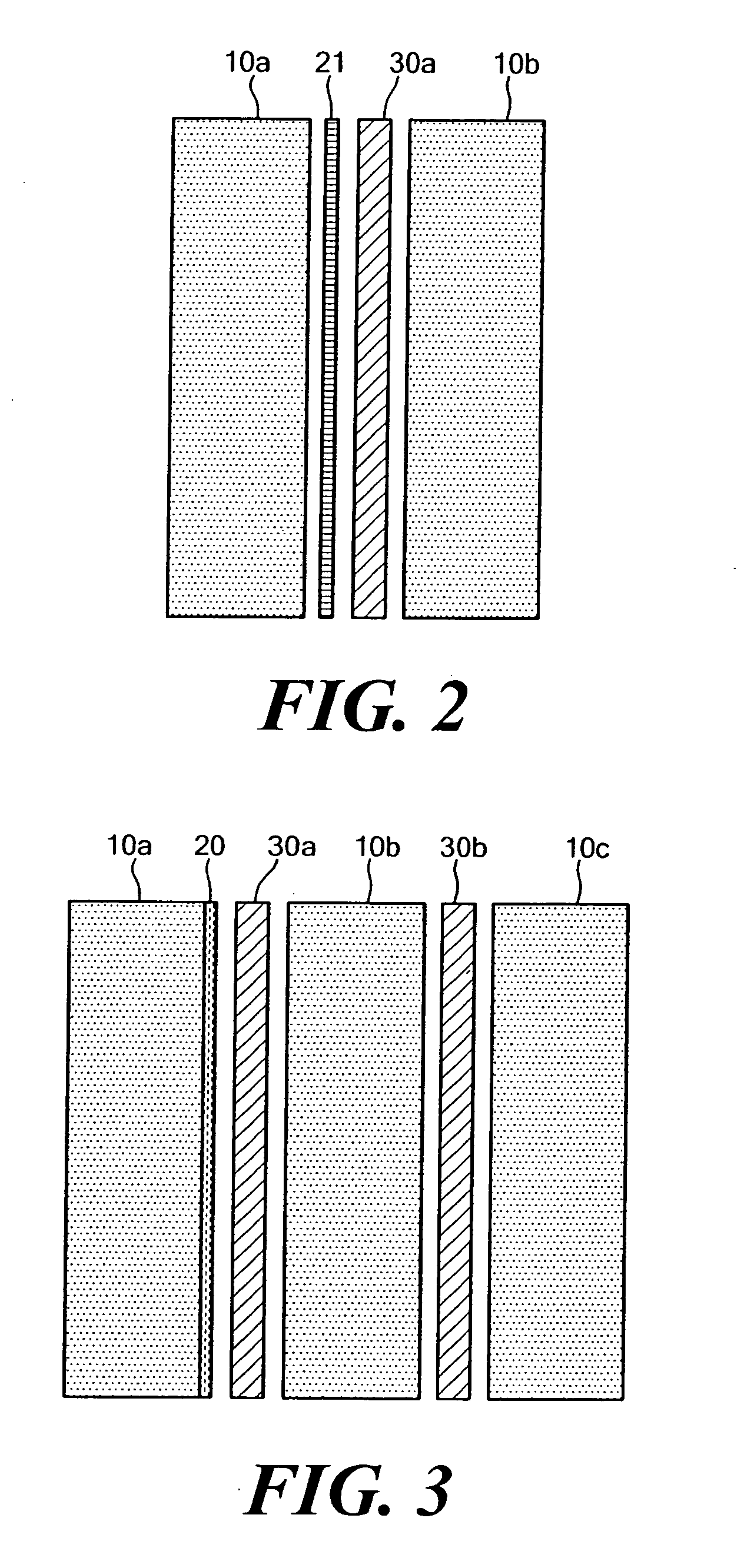Photochromic film material
a technology of photochromic materials and film layers, applied in the field of photochromic film layers, can solve the problems of insufficient use of photochromic materials in products involving long exposure to sunlight, and the use of photochromic materials is very limited, so as to minimize the penetration of short wavelength uv radiation and enhance the resistance to light fatigue
- Summary
- Abstract
- Description
- Claims
- Application Information
AI Technical Summary
Benefits of technology
Problems solved by technology
Method used
Image
Examples
examples
[0033] The following examples are presented to illustrate the advantages of the present invention and to assist one of ordinary skill in making and using the same. These examples are not intended in any way otherwise to limit the scope of the disclosure.
[0034] The following examples provide exemplary photochromic filters according to the invention. All parts in the adhesive formulations are by weight unless otherwise noted. The sheet numbers referenced below correspond to the sheet numbers in Table II.
example i
[0035] A 25 micrometer foil of clear polyethylene terepthalate (PET) was coated on one side with a 20% solution of an aliphatic urethane laminating adhesive in 1:1:1 by weight ethanol / toluene / methyl ethyl ketone solvent blend. This laminating adhesive consisted of 30 gms adhesive resin solution, 0.5 gm di-epoxide curing agent, 0.30 gm spiroindoline oxazine dye (commercially available material from PPG Chemicals, also known as “Photosol Blue 02-65”). The laminating adhesive solution was designated as “LAM-0”, meaning no light stabilizers.
[0036] The laminating adhesive coating solution was applied to the substrate surface using a Mayer Bar, the solvents were dried off with a forced hot air gun at a dry coating thickness of 2-8 microns, equivalent to about 2-8 gms per square meter of surface area.
[0037] The rheological properties of the photochromic adhesive solutions tend to yield unacceptable smoothness of the dried coating at thickness greater than 10 microns. This optical defect ...
example ii
[0040] A modification of LAM-0 was made by incorporating into the mix an equivalent amount (with respect to the dye) of UV absorbers 2-ethylhexyl p-methoxycinnamate, also called “Uvinul 3088” manufactured by BASF Corporation, and hindered amine light stabilizer called “Tinuvin 5050” available from Ciba-Geigy Specialty Chemicals. This light-stabilized adhesive mix was designated as “LAM-1” and was used to make another 3-ply laminate. [0041] [PC—Sheet #02]→PET / LAM-1 / PET / LAM-0 / PET
PUM
| Property | Measurement | Unit |
|---|---|---|
| Nanoscale particle size | aaaaa | aaaaa |
| Nanoscale particle size | aaaaa | aaaaa |
| Nanoscale particle size | aaaaa | aaaaa |
Abstract
Description
Claims
Application Information
 Login to View More
Login to View More - R&D
- Intellectual Property
- Life Sciences
- Materials
- Tech Scout
- Unparalleled Data Quality
- Higher Quality Content
- 60% Fewer Hallucinations
Browse by: Latest US Patents, China's latest patents, Technical Efficacy Thesaurus, Application Domain, Technology Topic, Popular Technical Reports.
© 2025 PatSnap. All rights reserved.Legal|Privacy policy|Modern Slavery Act Transparency Statement|Sitemap|About US| Contact US: help@patsnap.com



